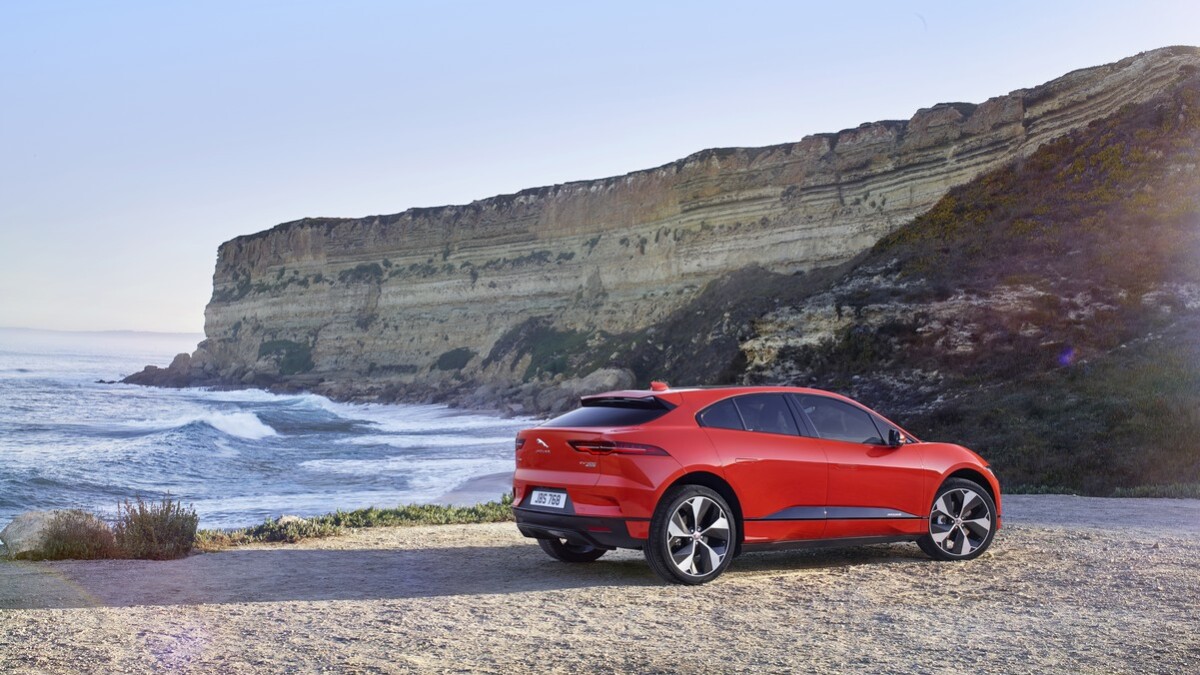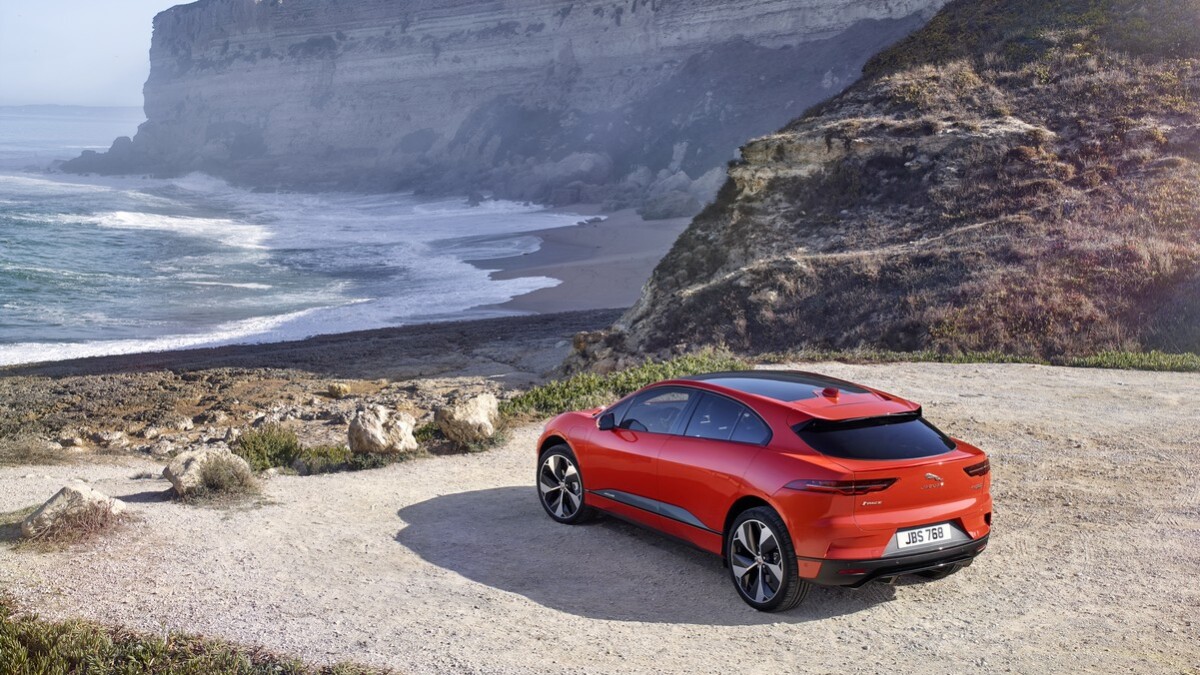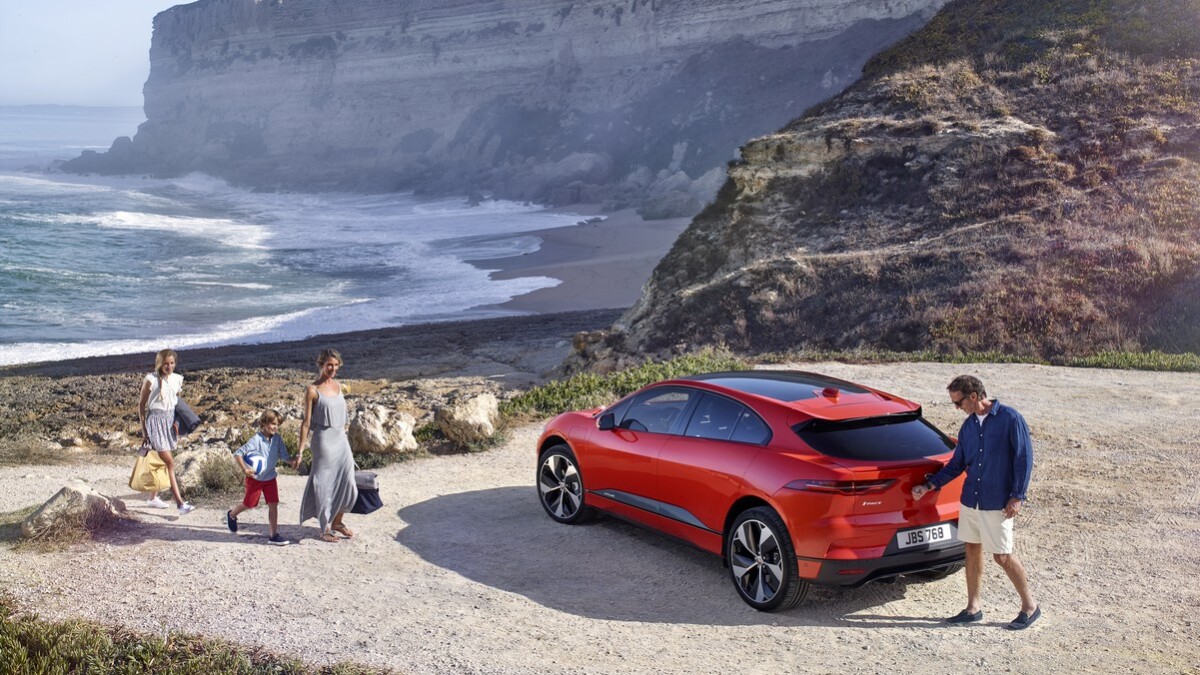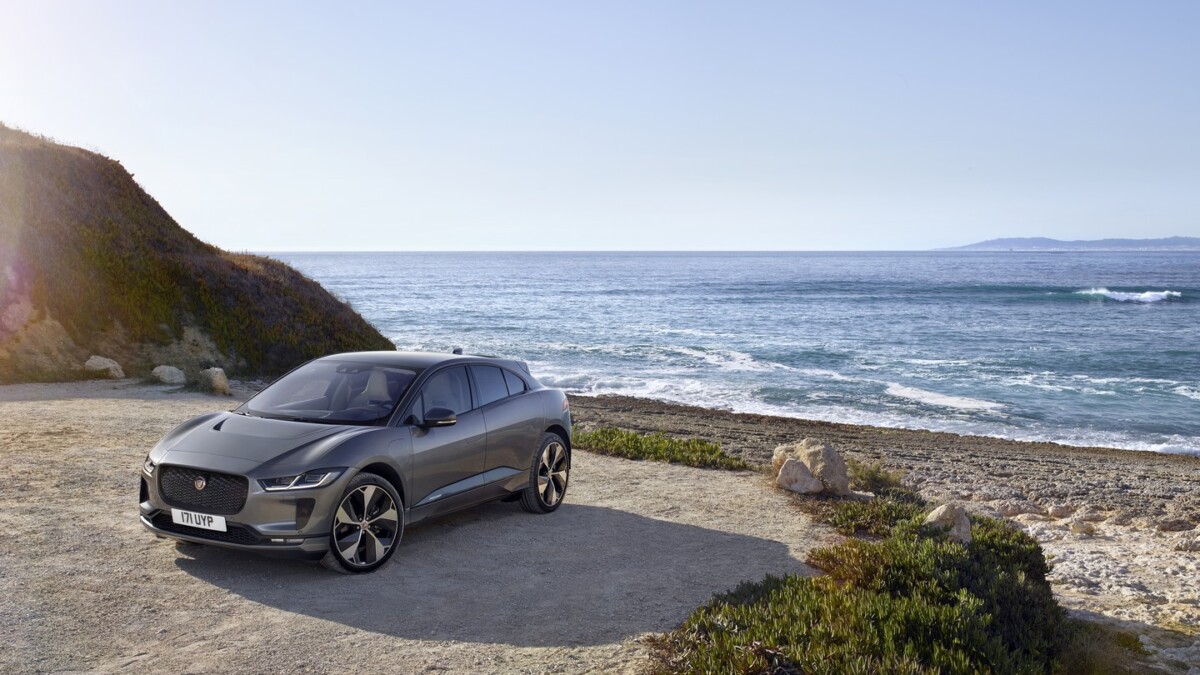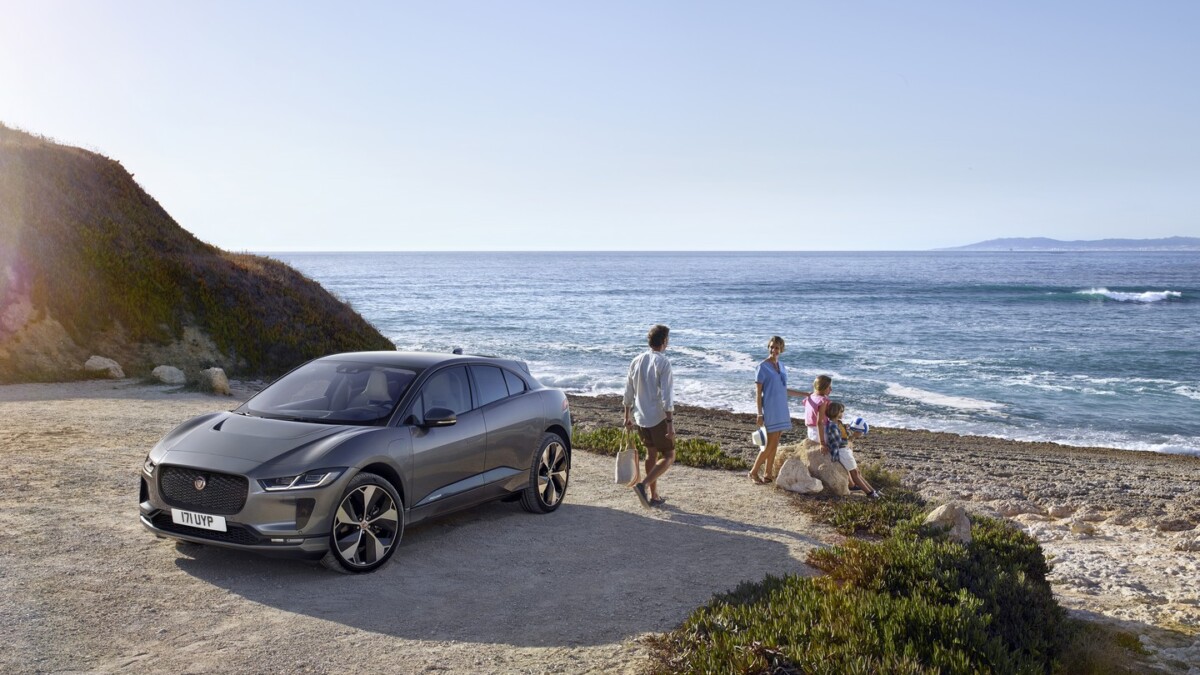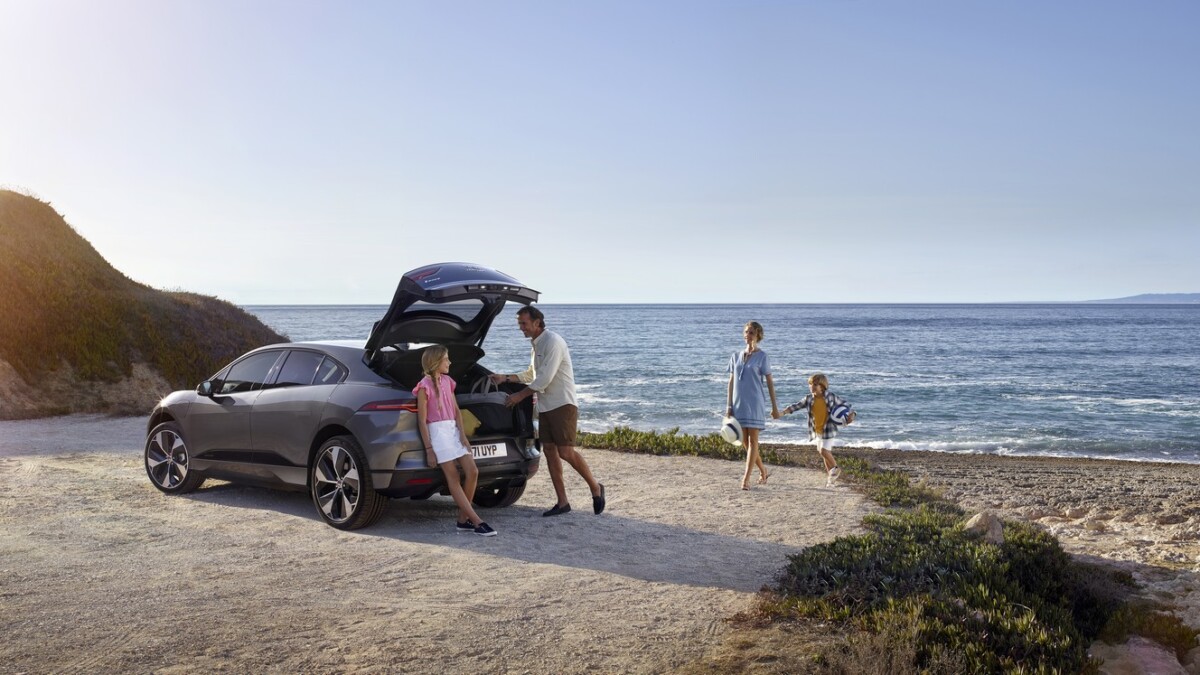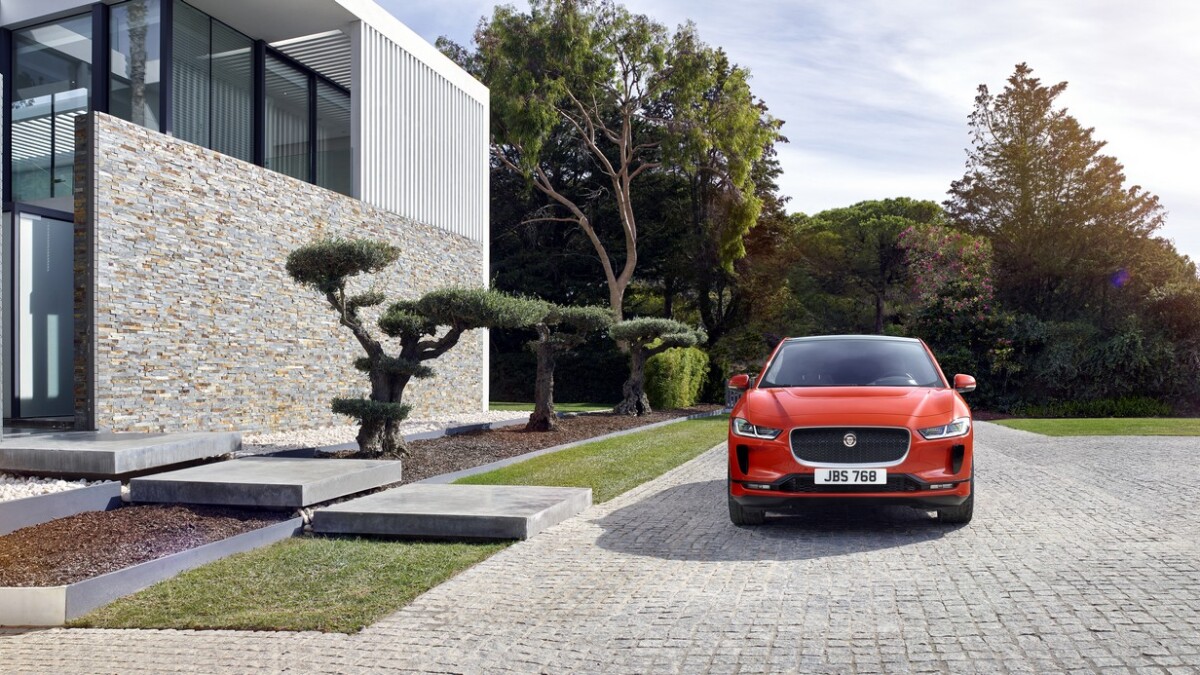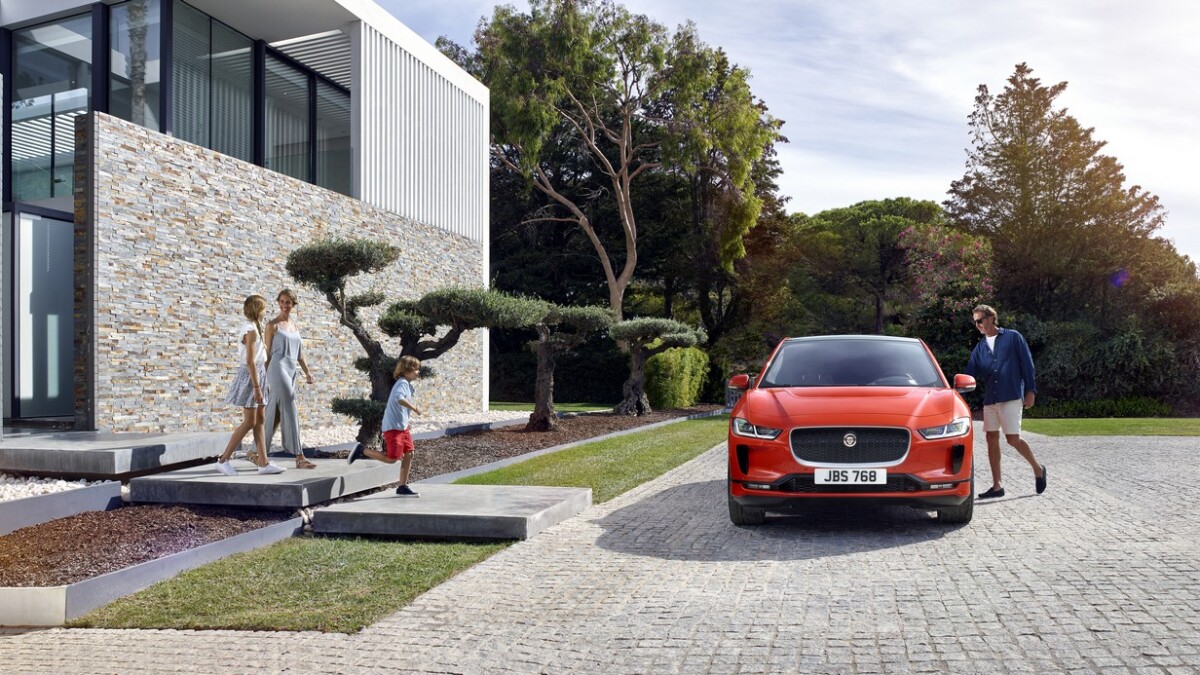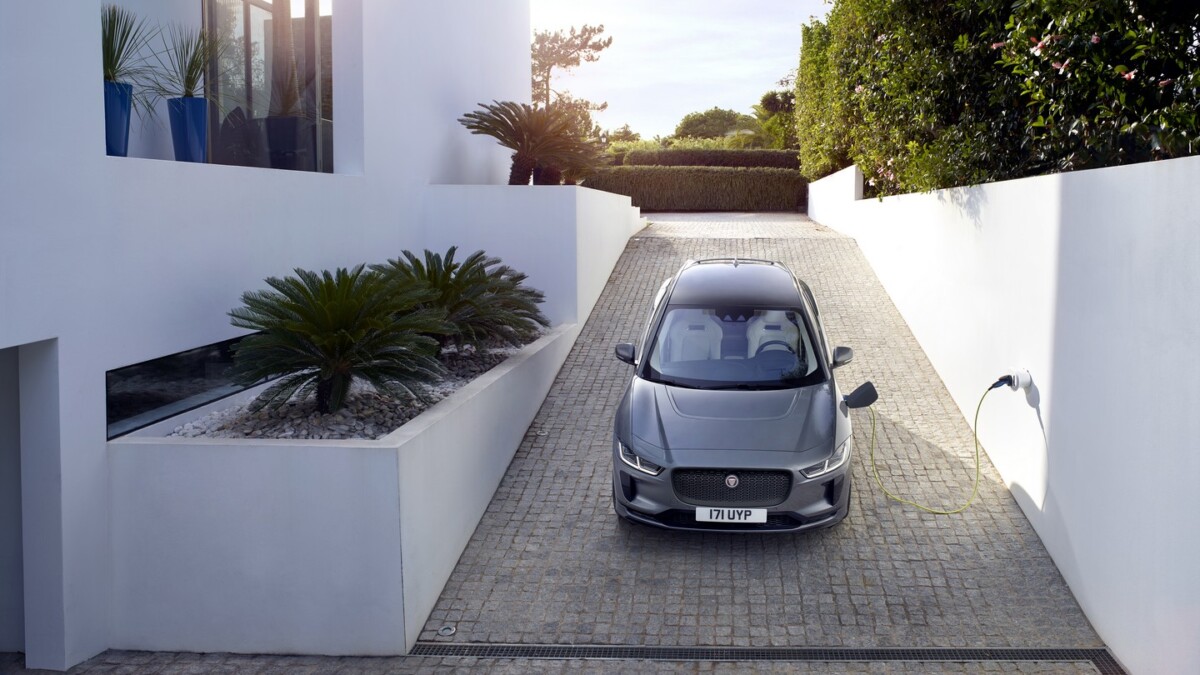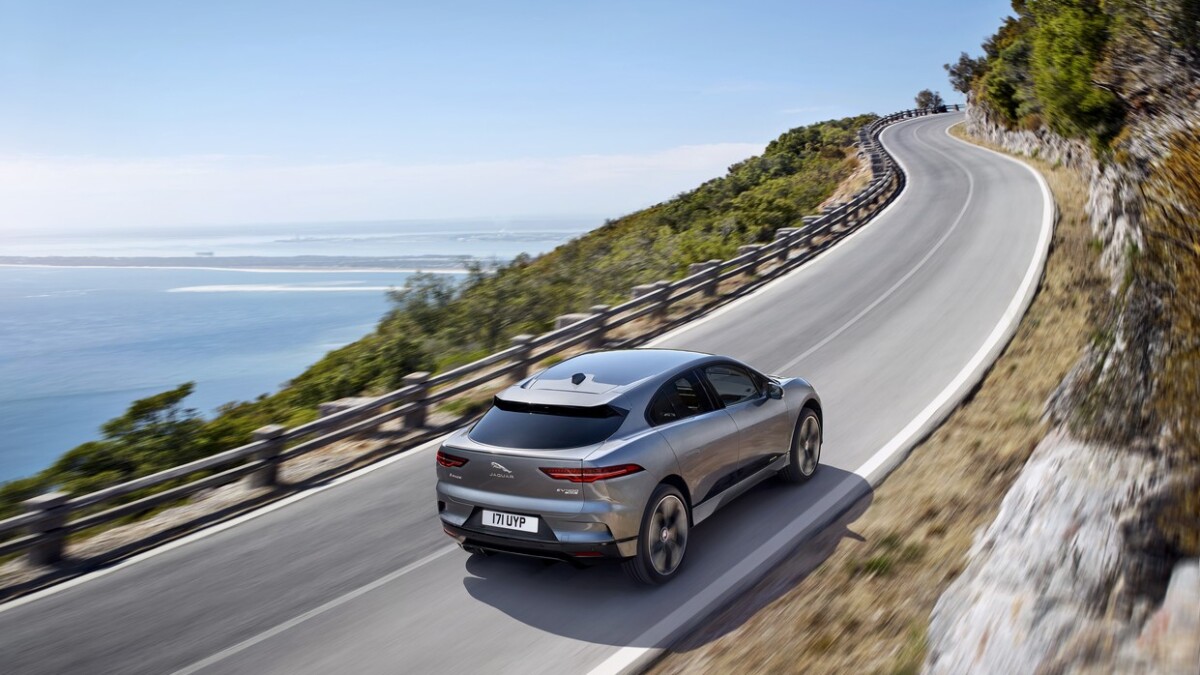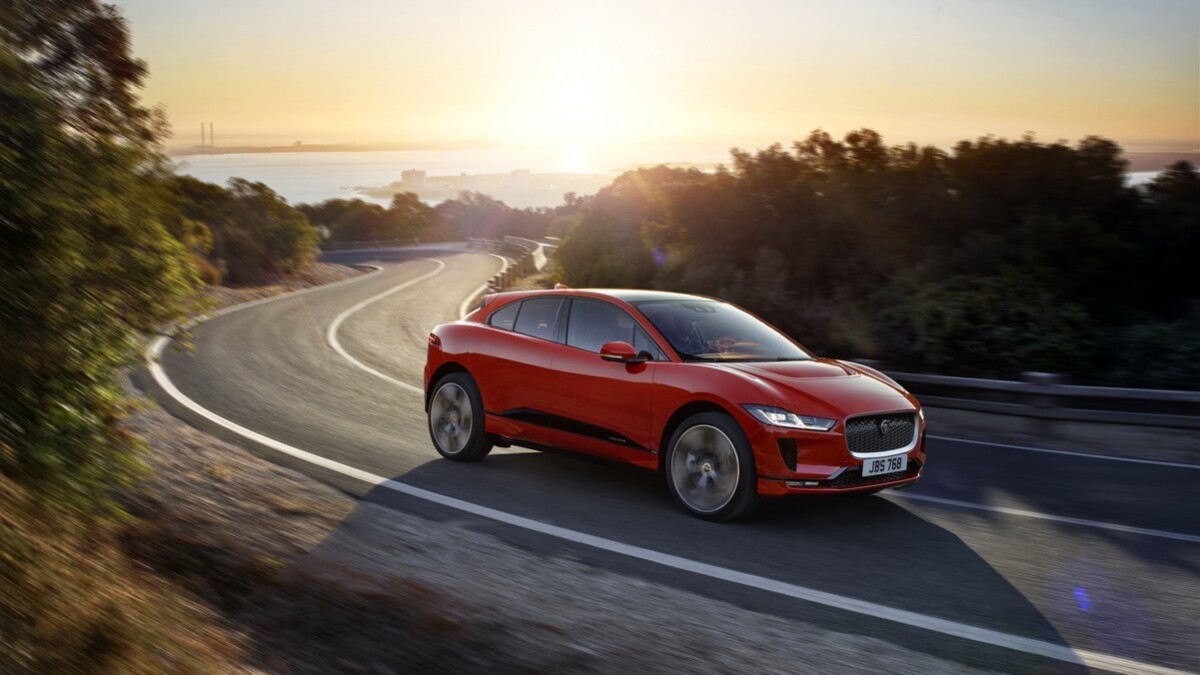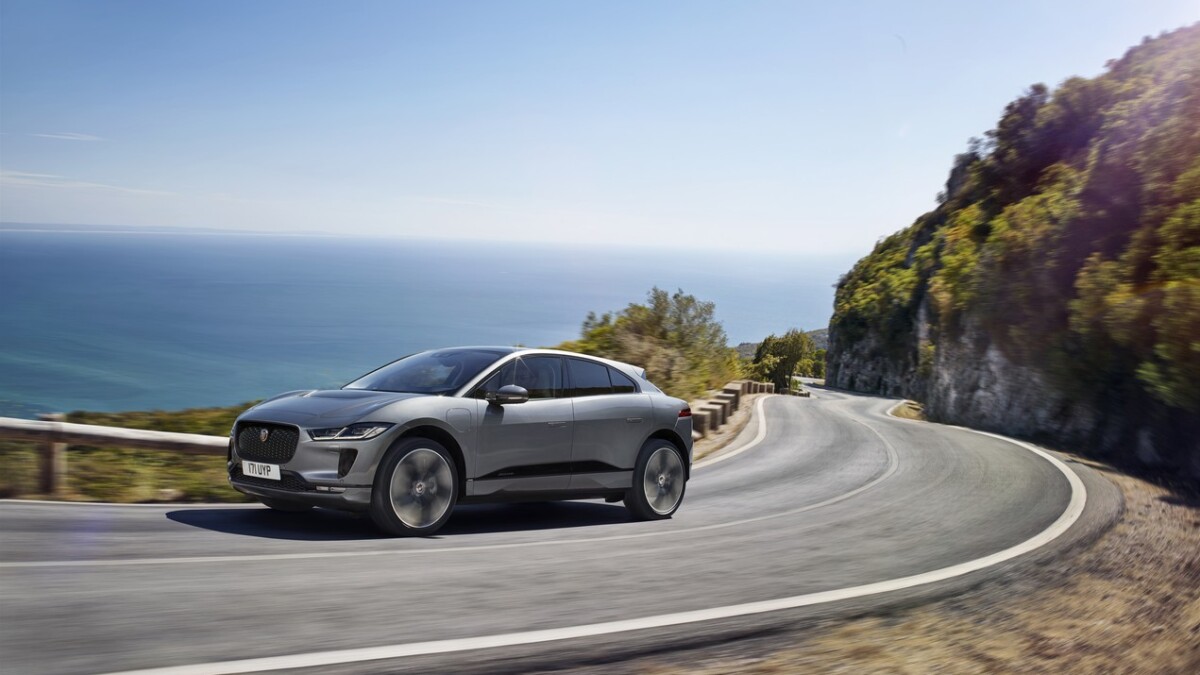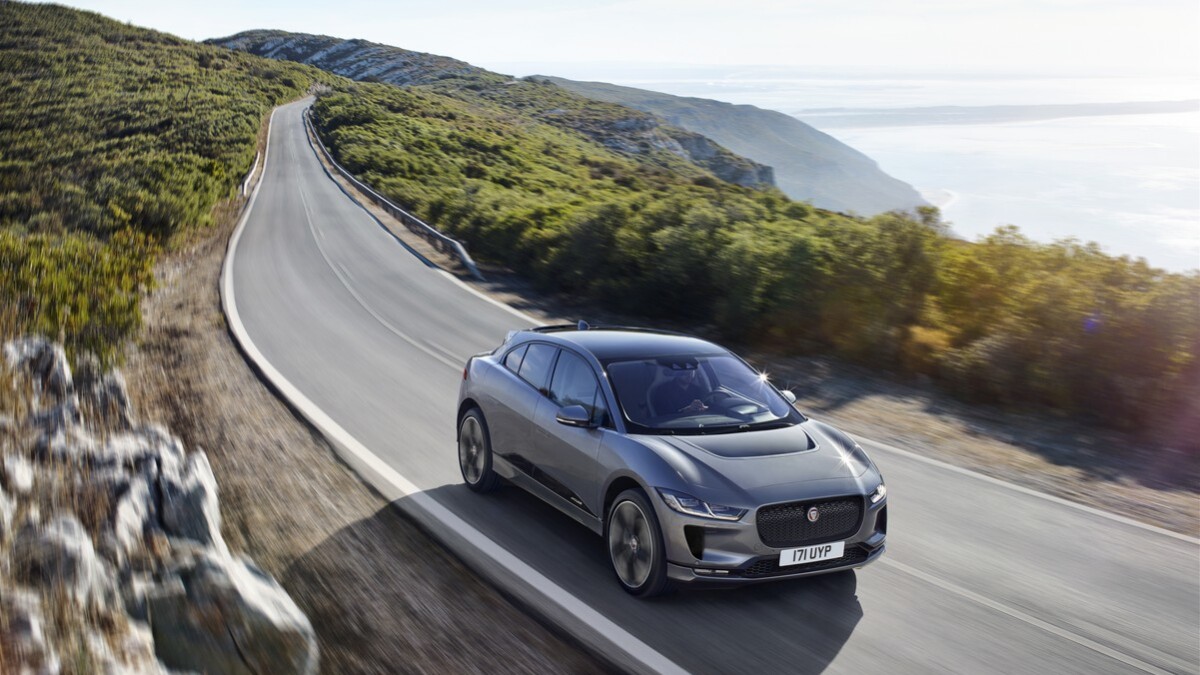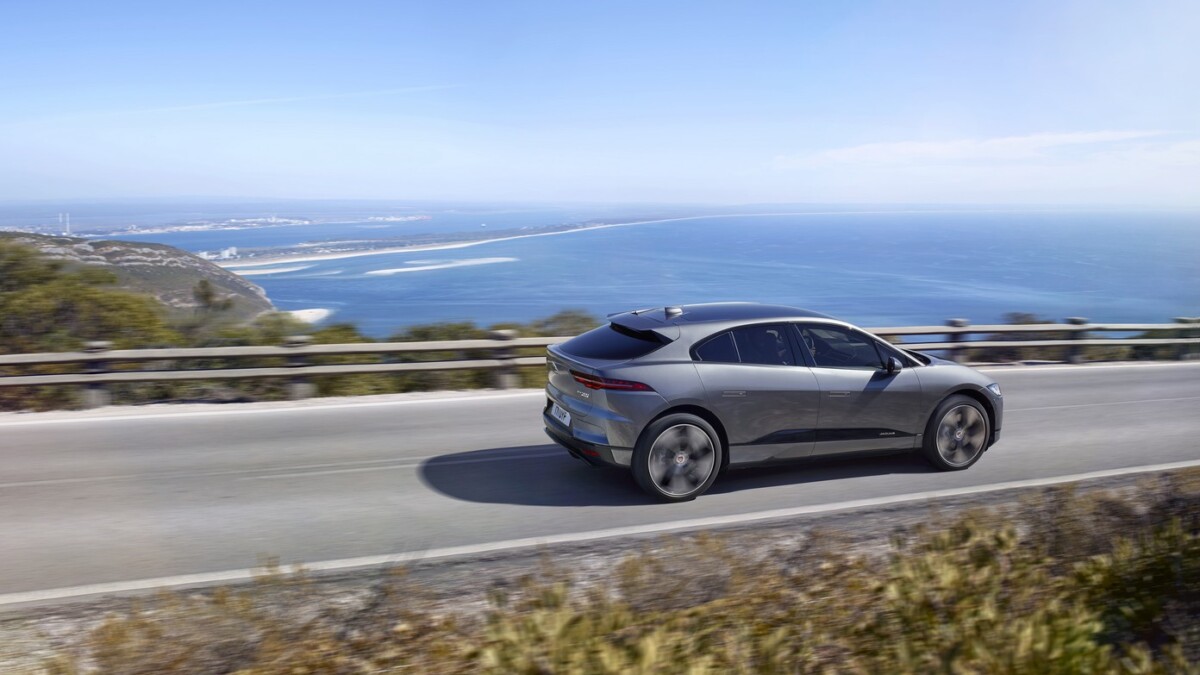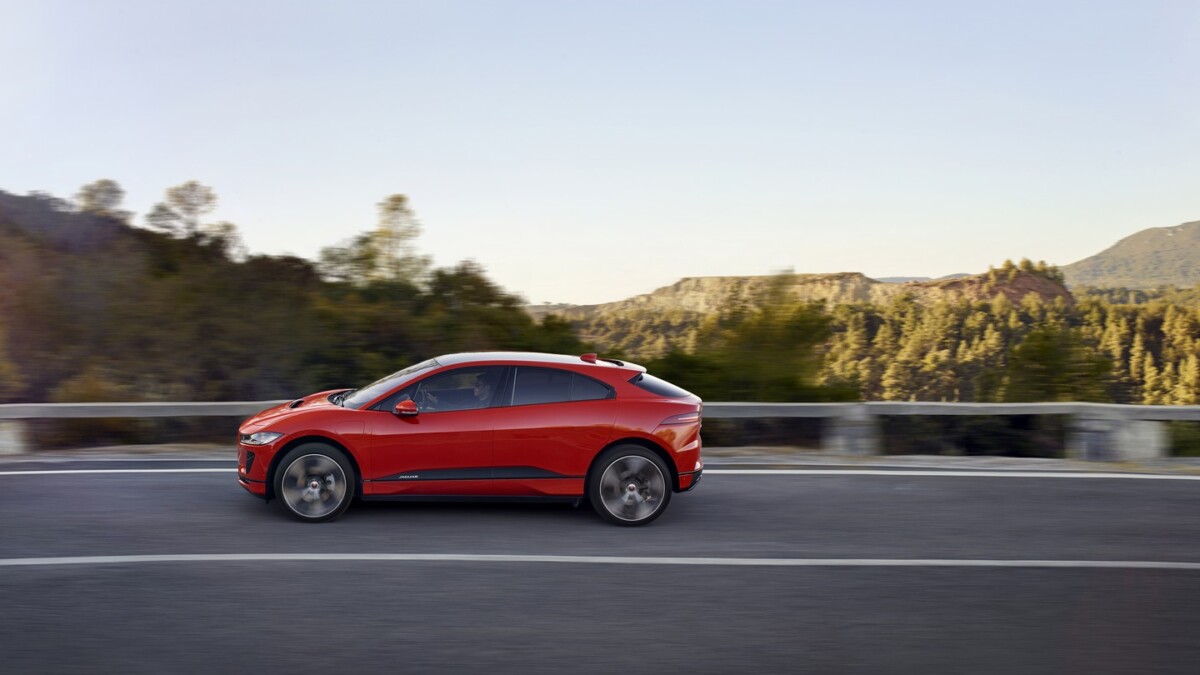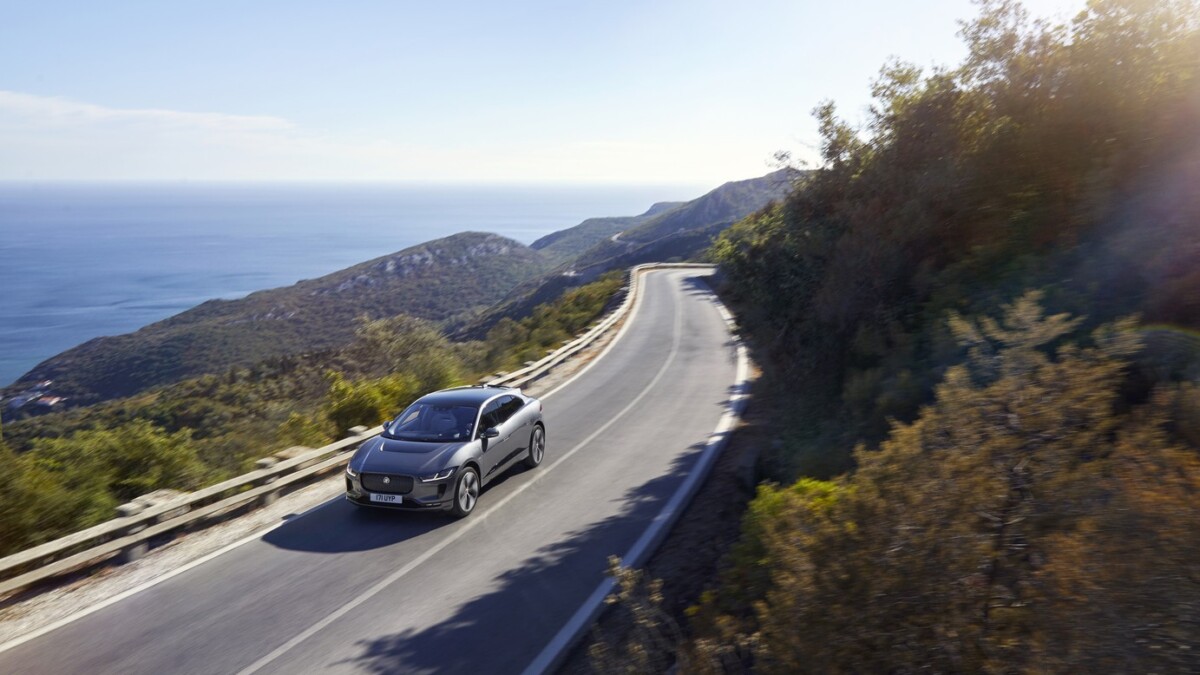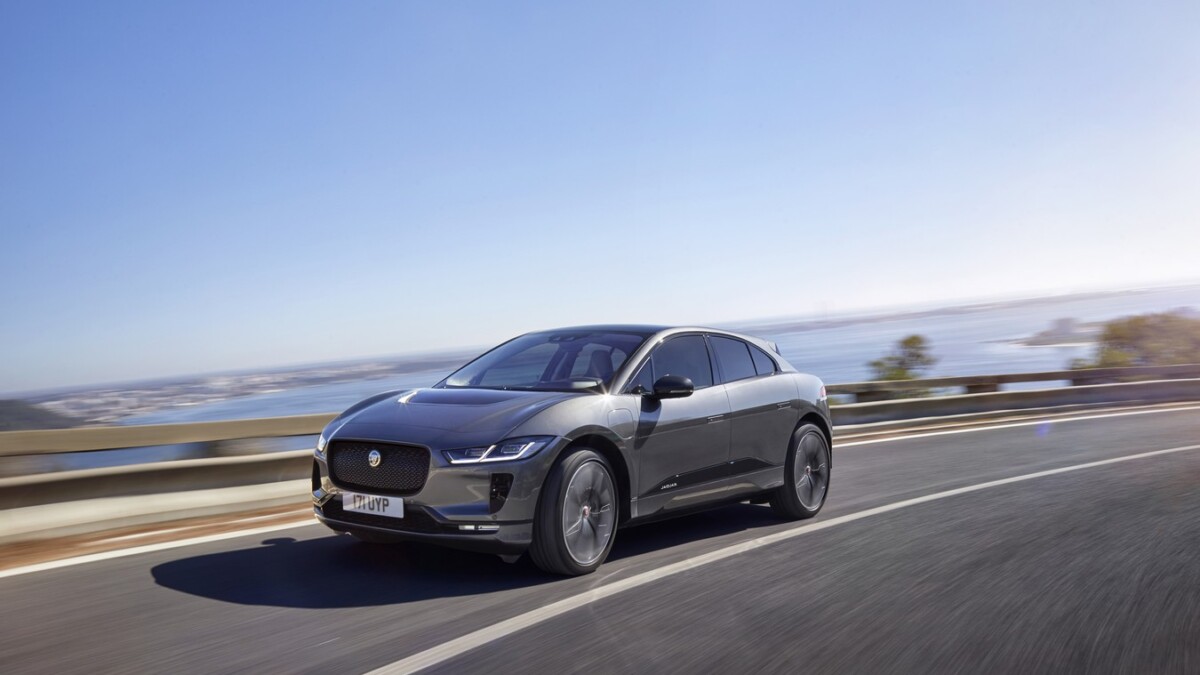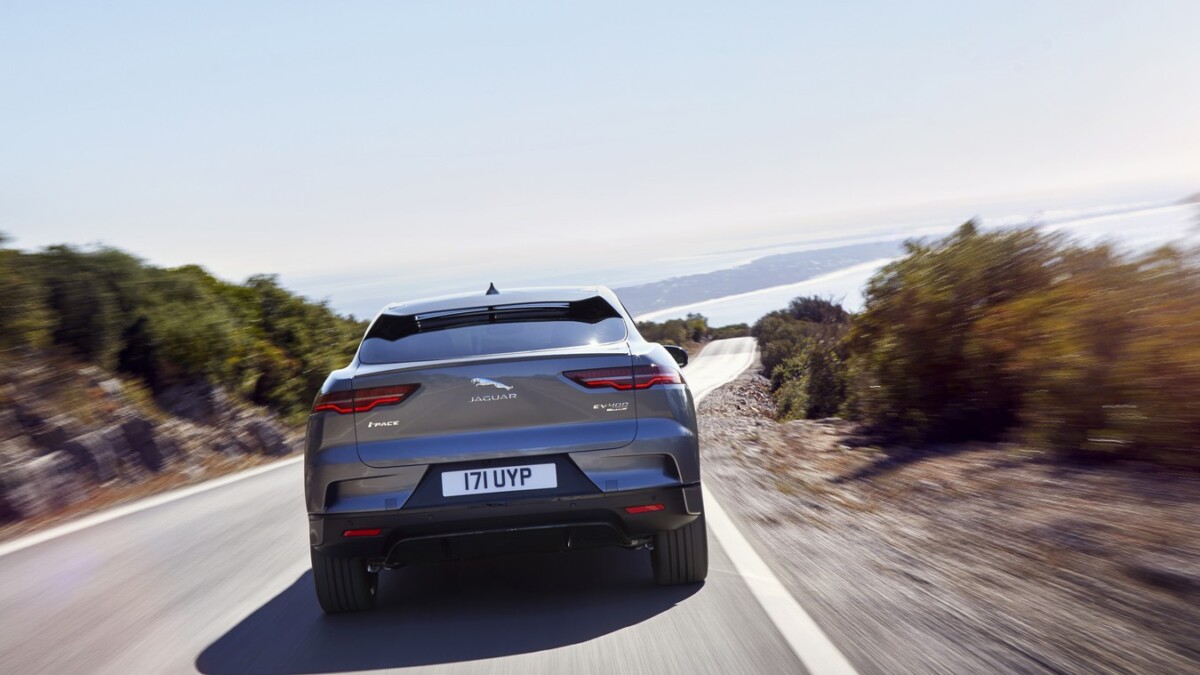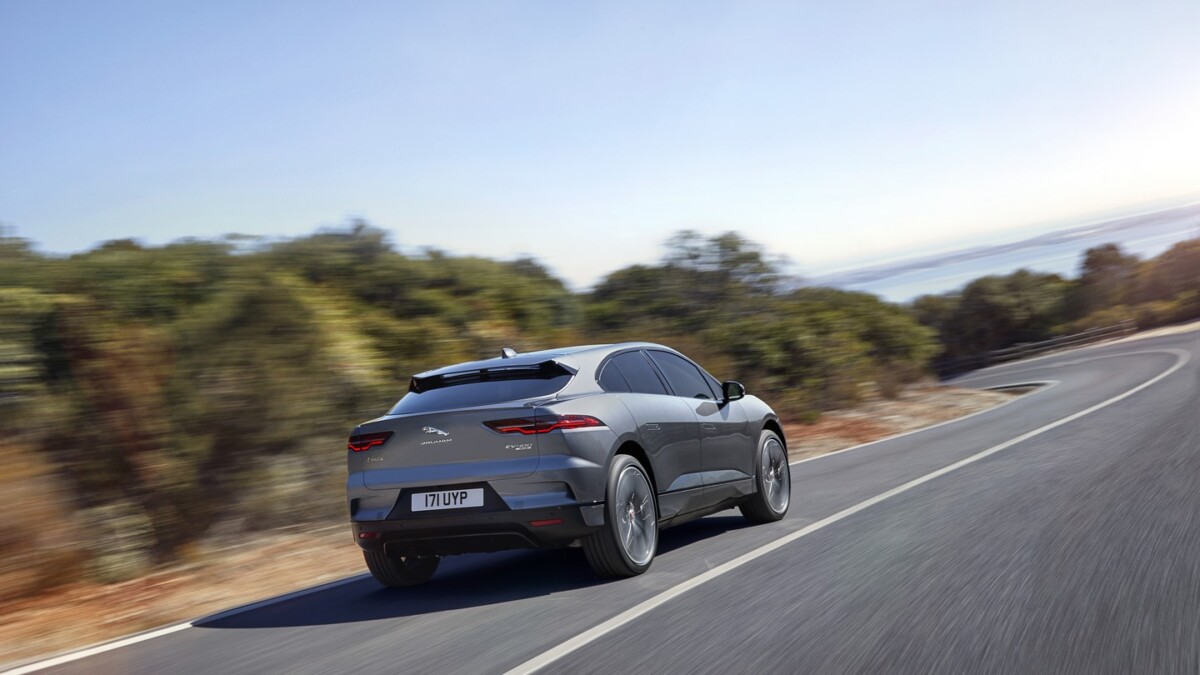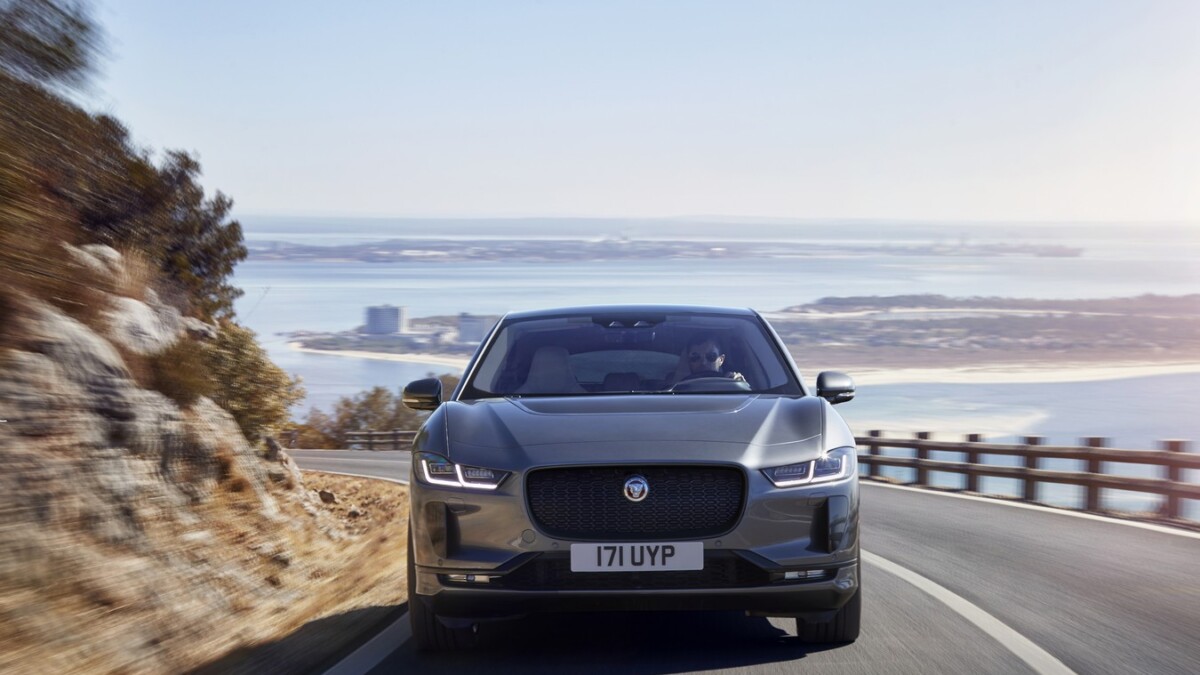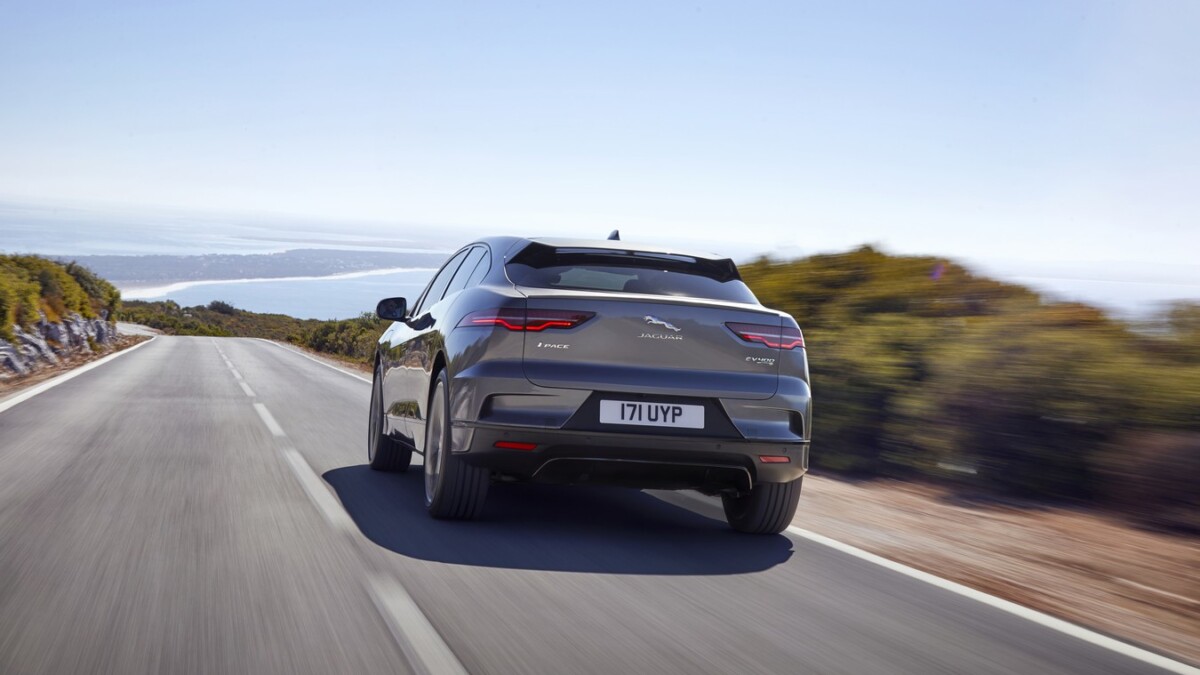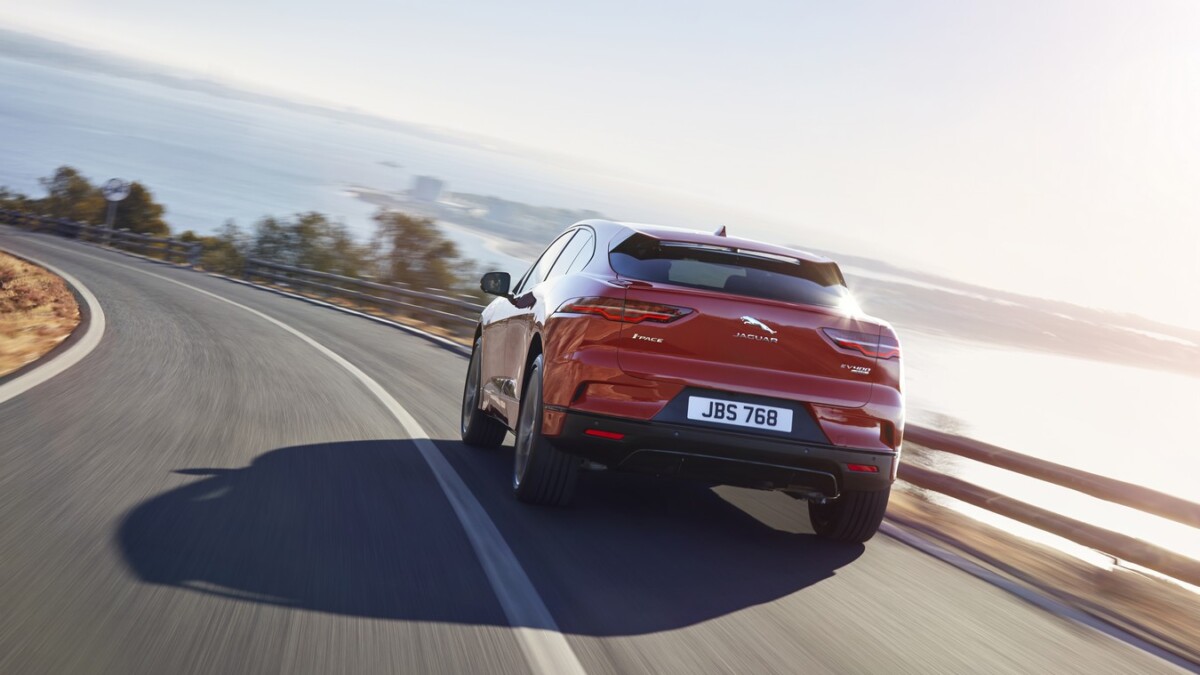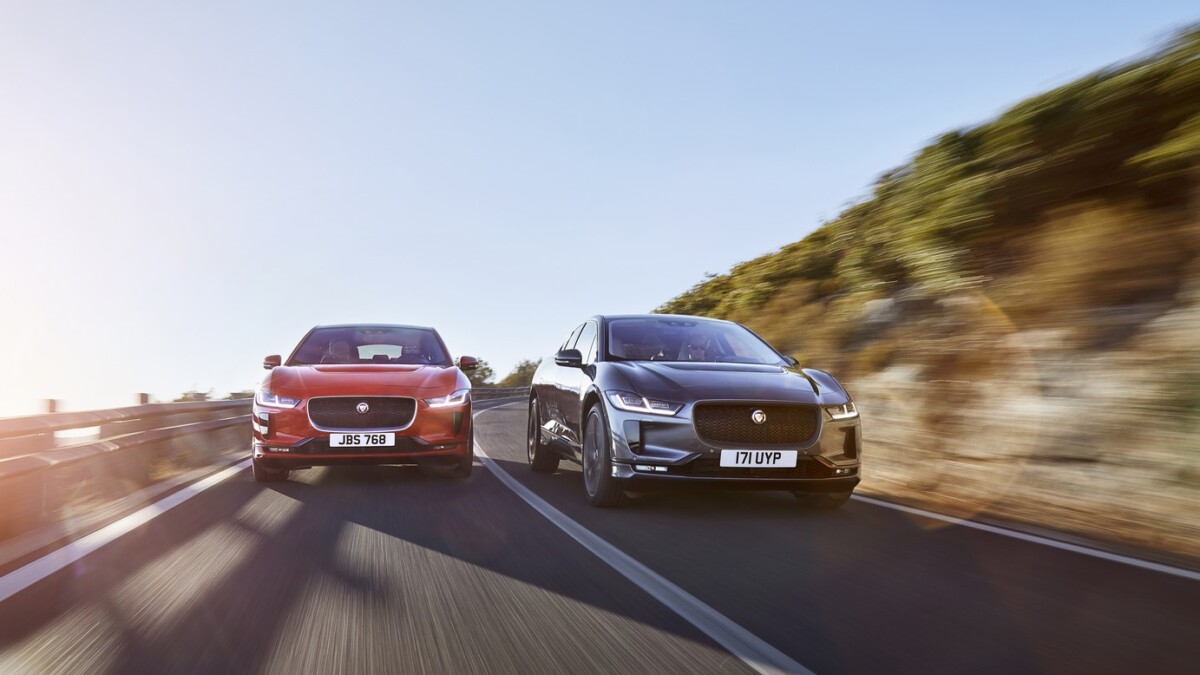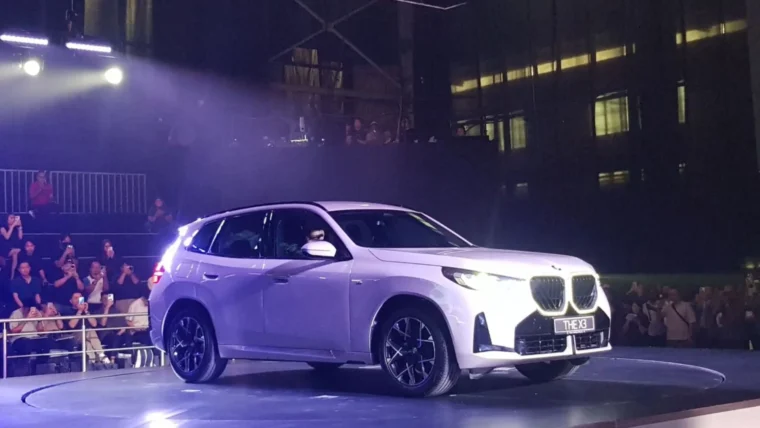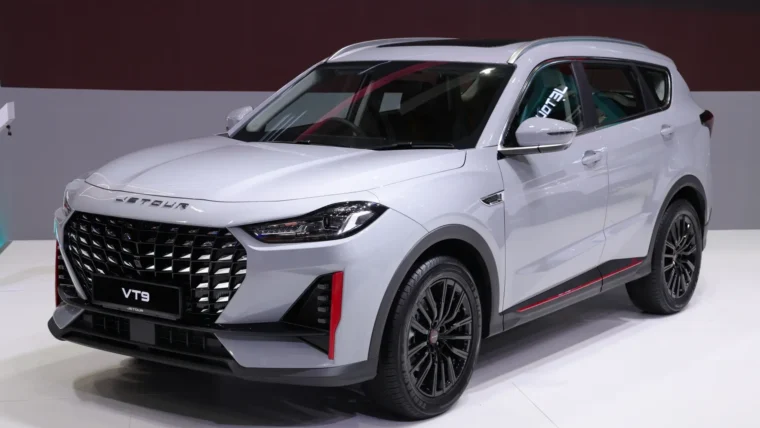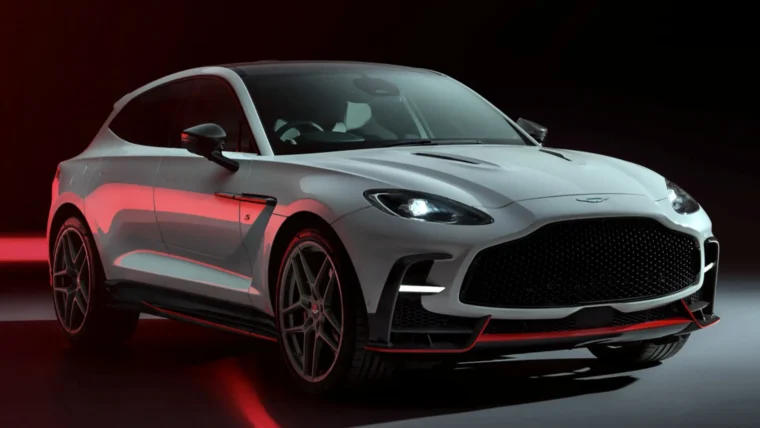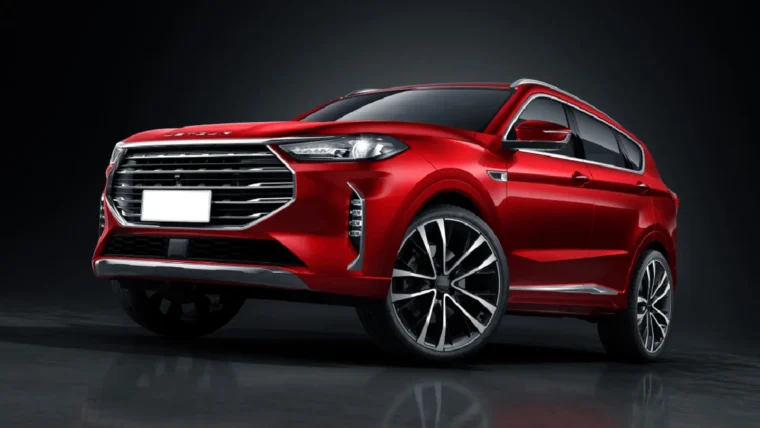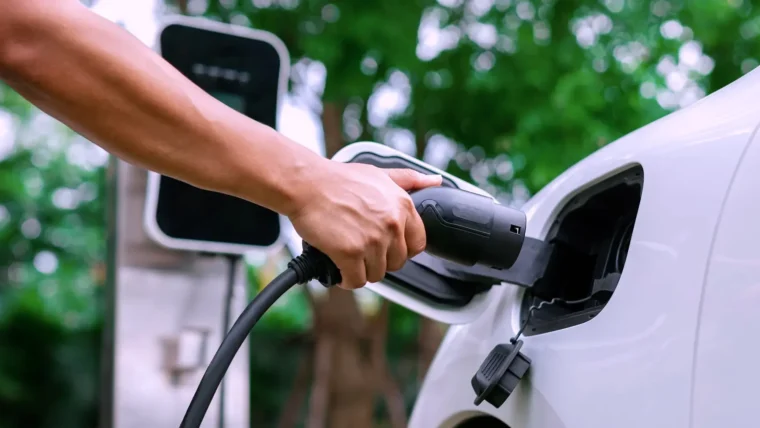Jaguar has just released the Jaguar I-PACE which is an electric SUV to take on Tesla’s Model X. The key difference is that the price makes the Jaguar looks a lot more affordable compared to the Model X and in terms of overall experience in the auto industry, Jaguar just has that one notch up. But in the world of electric vehicles, does that really matter?
With a state-of-the-art 90kWh Lithium-ion battery comprising 432 pouch cells, chosen for their high energy density and superior thermal management, the I-PACE delivers a range of 480km (WLTP cycle) which makes the car very drivable and definitely no slouch.
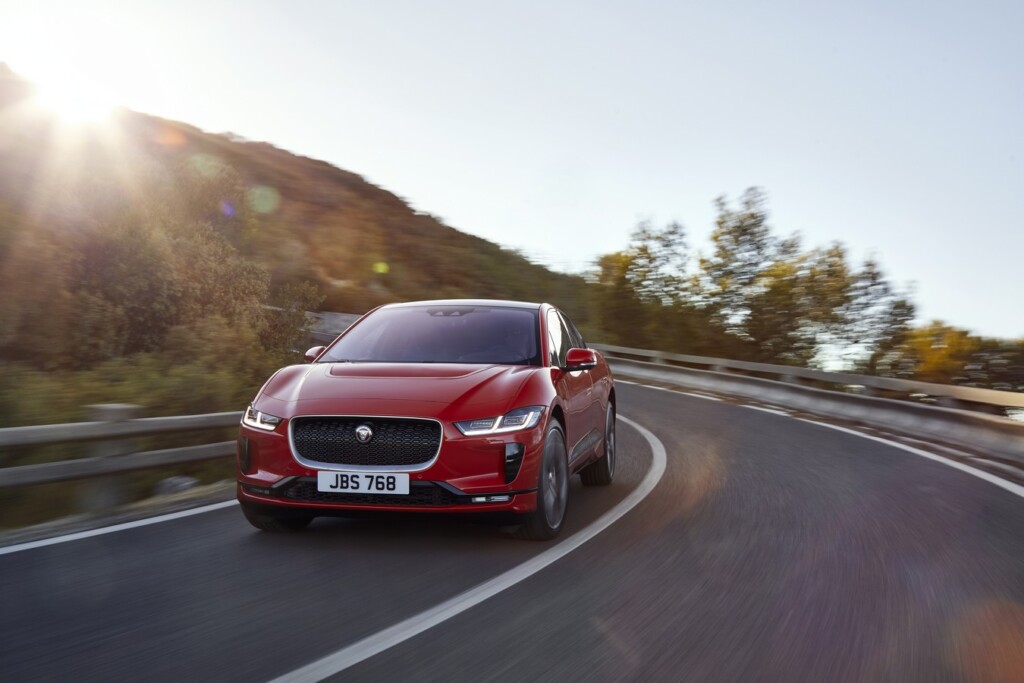
Owners will be able to achieve a 0-80 per cent battery charge from empty in just 40 minutes using DC rapid charging (100kW), or top up an additional 100km in as little as 15 minutes. Alternatively, home charging with an AC wall box (7kW) will take the I-PACE from empty to 80 per cent in just over ten hours, making it ideal for overnight charging.
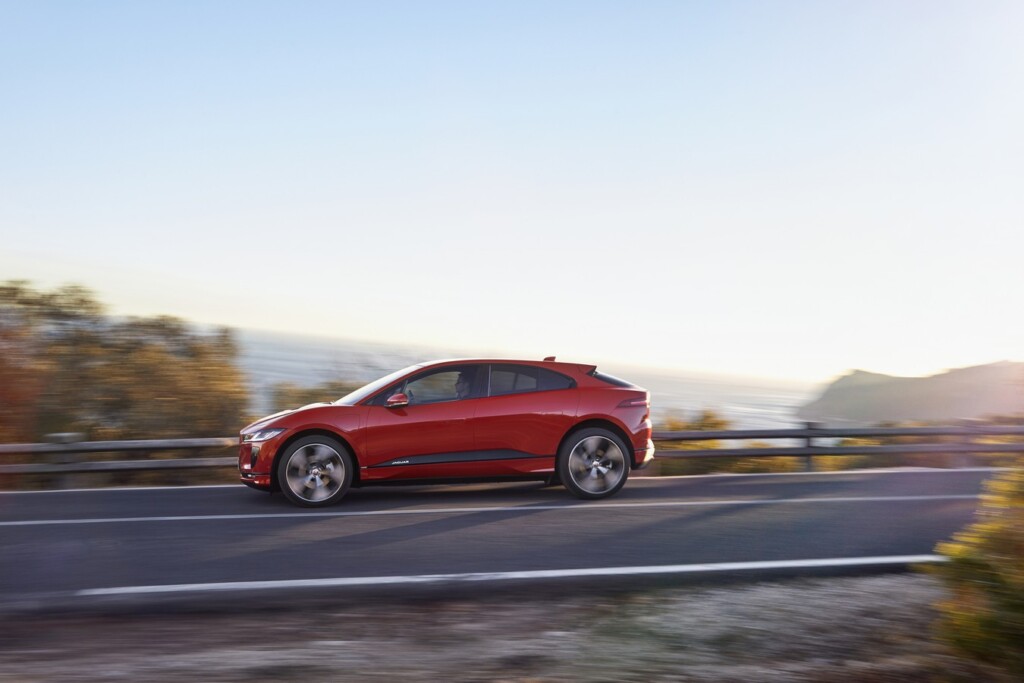
A suite of smart range-optimising features and smartphone apps will give I-PACE drivers complete peace of mind, whether monitoring vehicle charging from home or confirming available range mid-journey. For example, owners can automatically pre-condition the battery temperature to maximise range, and heat or cool the cabin before starting a journey. Using mains power to warm or cool the car when it’s plugged in means the range is unaffected.
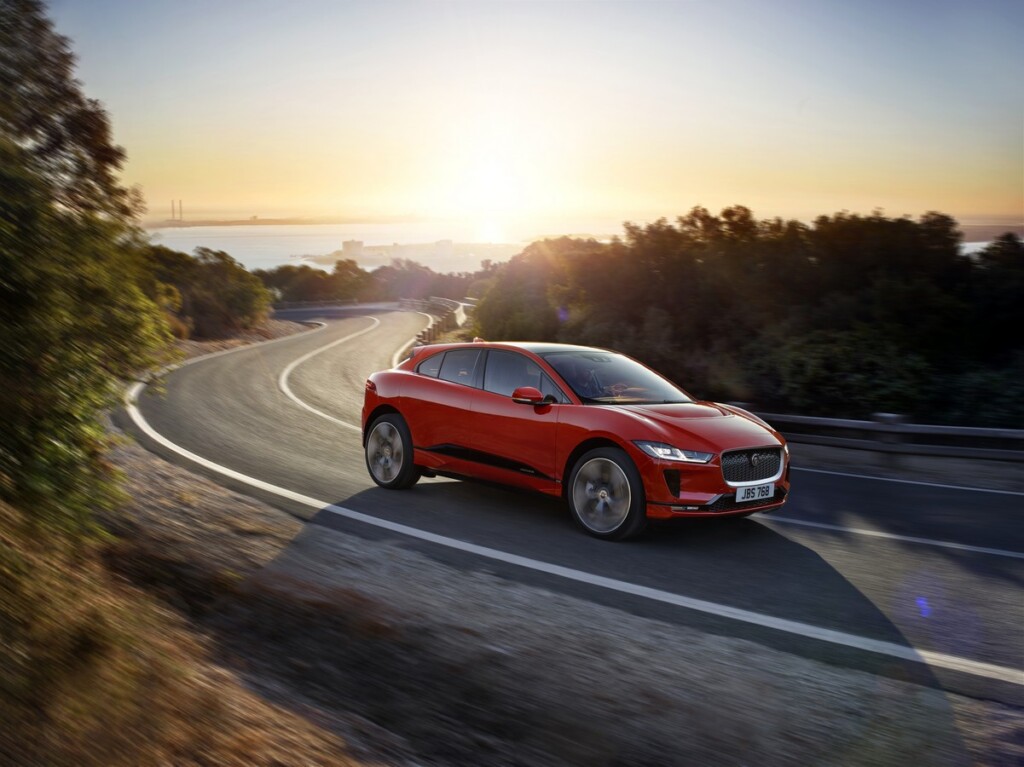
ELECTRIC PERFORMANCE
“The I-PACE is a true Jaguar, delivering driver-focused dynamics with exceptional ride, handling and refinement. With all-wheel drive technology and 400PS, our first electric vehicle delivers instantaneous acceleration on all road surfaces, in all conditions.” – Mike Cross, Jaguar Chief Engineer
A combination of all-wheel drive, 400PS and 696Nm of torque ensures the zero-emission Jaguar I-PACE delivers electric performance in every sense. The instantaneous torque delivery inherent in an EV gives Jaguar’s new performance SUV impressive acceleration from a standing start, sprinting from 0-100km/h in just 4.8 seconds (0-60mph in 4.5 seconds).

The two Jaguar-designed synchronous permanent magnet electric motors drive the front and rear axles. Each motor fits concentrically around a compact, single-speed epicyclic transmission and differential, enabling instant and precise distribution of torque to all four wheels as the I-PACE continuously adapts its front-rear balance to suit road conditions.
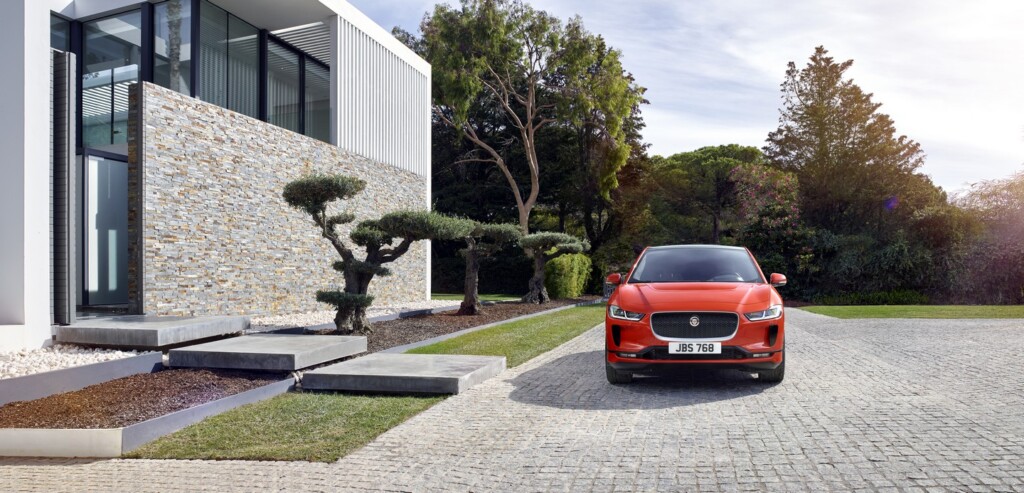
Conceived as a high-performance EV from the outset, the I-PACE delivers engaging driving dynamics, everyday usability and comfort, with a unique balance of ride, refinement and control. Jaguar has placed the battery as low as possible between the axles, providing 50:50 weight distribution and a low centre of gravity, optimising composure and reducing body roll. These inherent advantages are allied to a light, stiff aluminium EV architecture which delivers torsional rigidity of 36kNm/degree – the highest of any Jaguar.
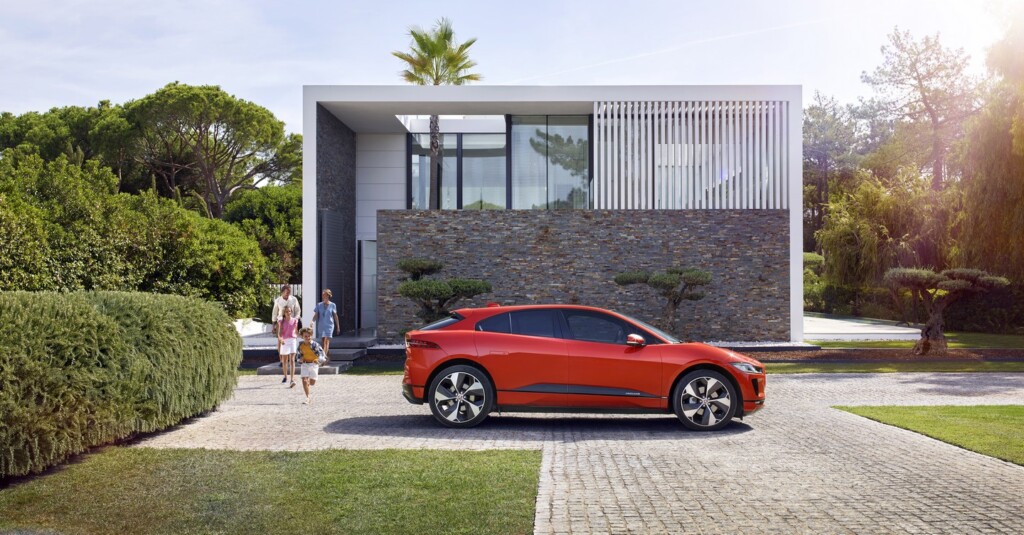
Advanced double wishbone front and Integral Link rear suspension deliver both incredible ride comfort and the lateral stiffness needed during dynamic driving, ensuring excellent handling, grip and steering responses. The compact and lightweight suspension design features aluminium suspension links and knuckles to reduce weight, while maximising interior space.
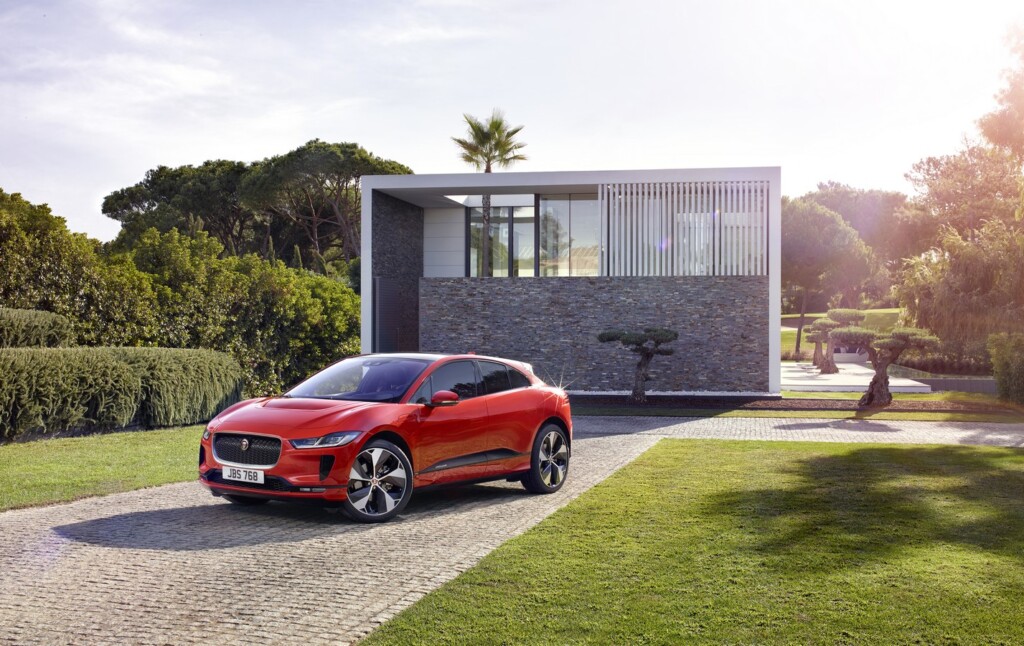
Optional air suspension with Adaptive Dynamics and continuous variable damping also give the I-PACE true sporting agility and balance. The self-levelling set-up maintains the optimum suspension geometry even when the vehicle is fully loaded. As a result, occupants enjoy supreme comfort at all times and the suspension provides a combination of bump absorption and body control that feels calm and natural in all conditions.
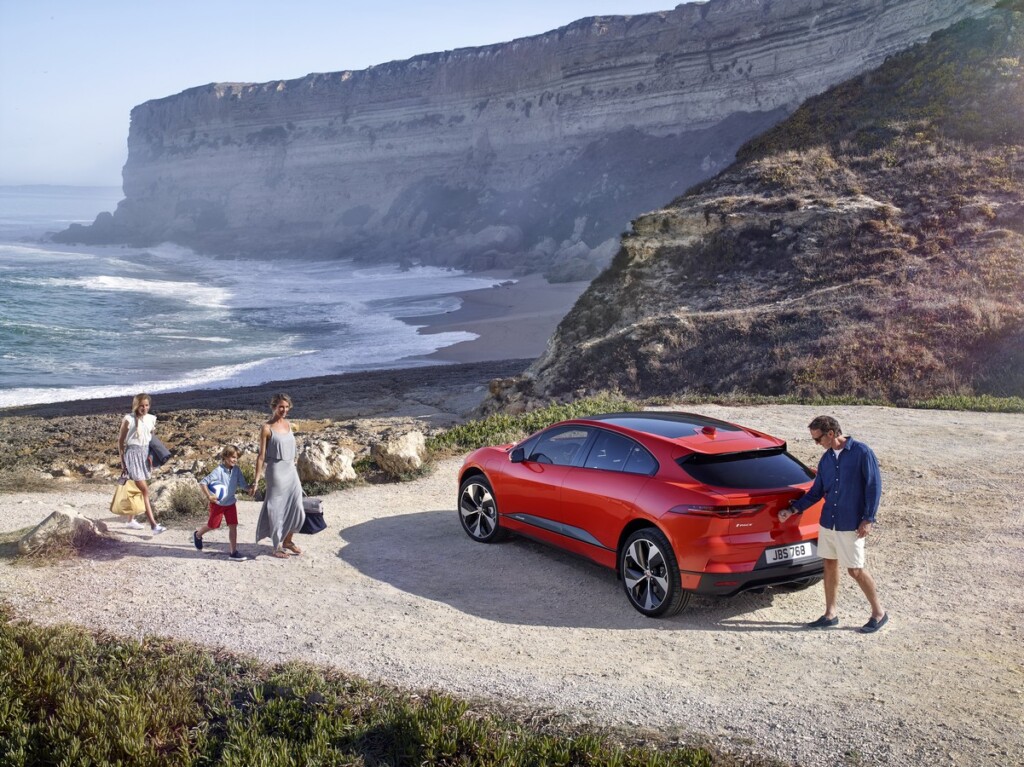
Jaguar engineers have replaced a conventional brake vacuum servo with an electric brake booster on the I-PACE. This gives the brake system more flexibility when blending regenerative and traditional mechanical braking, providing consistent and precise pedal feel in all circumstances.
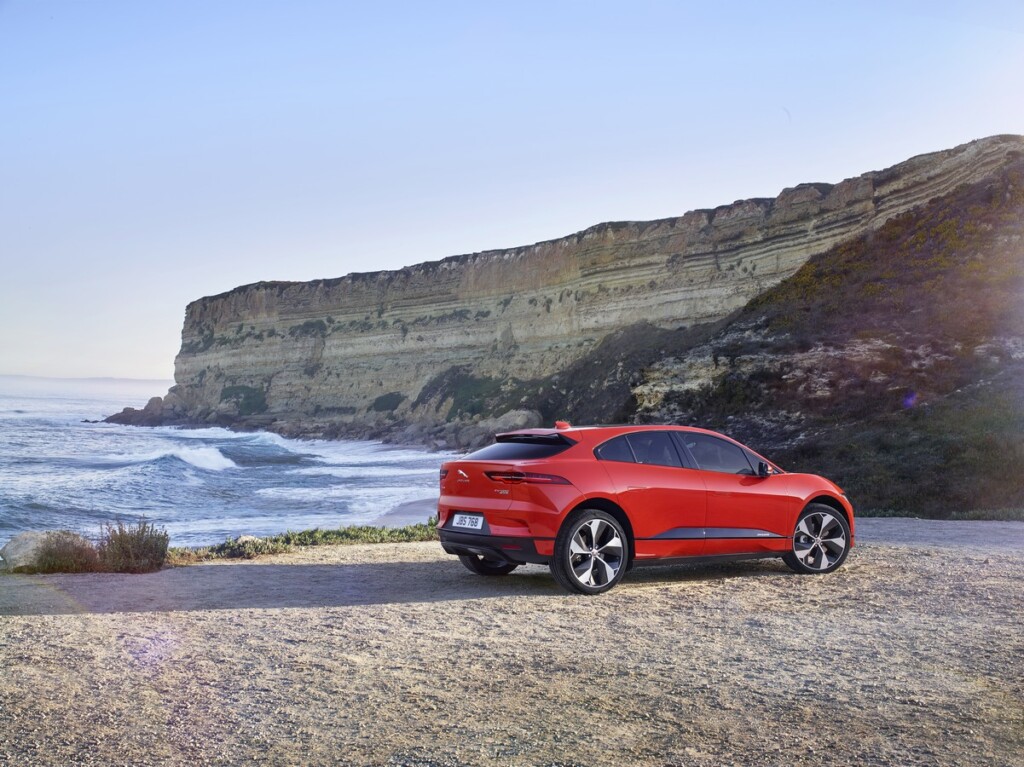
The I-PACE also enables the driver to select either high or low levels of regenerative braking to maximise efficiency and optimise vehicle range. When high regenerative mode is selected it effectively allows the driver to experience intuitive single-pedal driving as the car decelerates when lifting off the accelerator, reducing reliance on the brake pedal when slowing down. A maximum regenerative braking force of 0.4G is achievable.
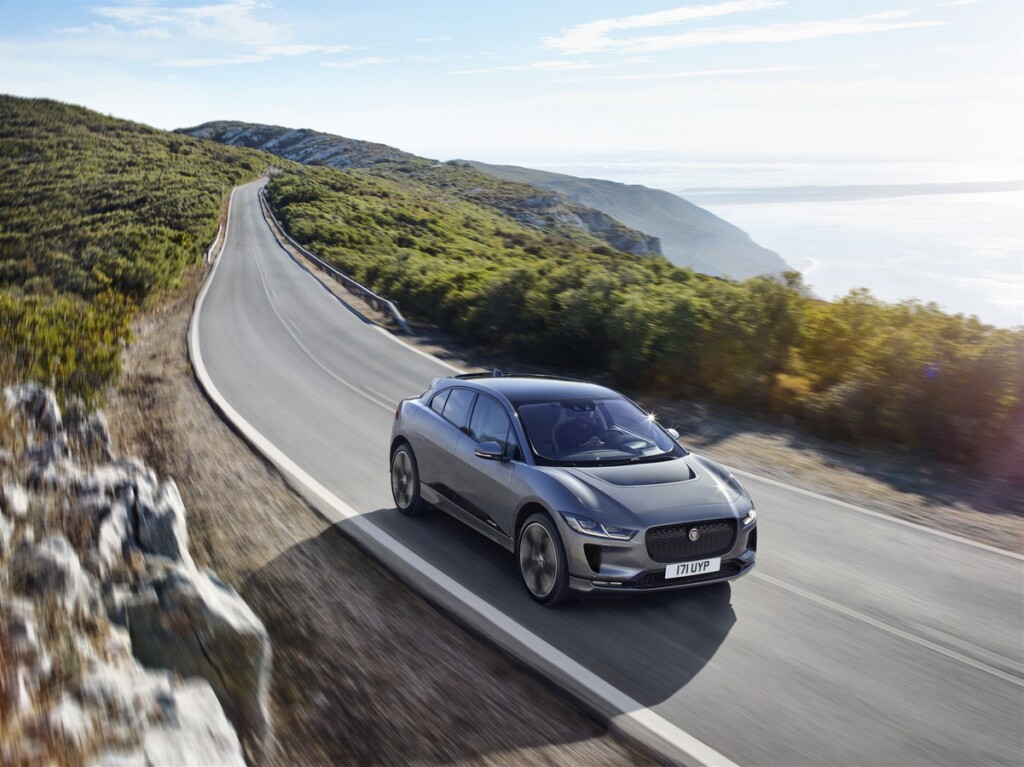
In heavy traffic, the driver can turn off the vehicle’s creep to improve comfort. The driver can then slow the vehicle just by easing off the accelerator pedal with no need to use the brakes to hold the car stationary, even on an incline.
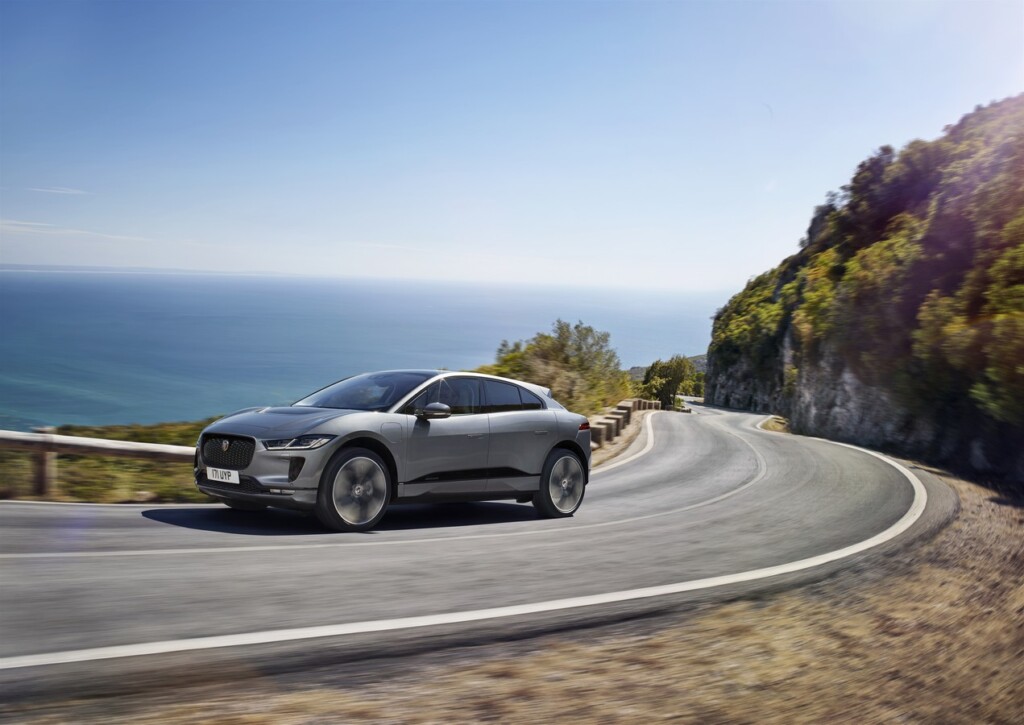
As a responsible business, Jaguar is committed to delivering a cleaner future and plans to prolong the life of I-PACE batteries with new recycling partnerships and second-life energy storage trials.
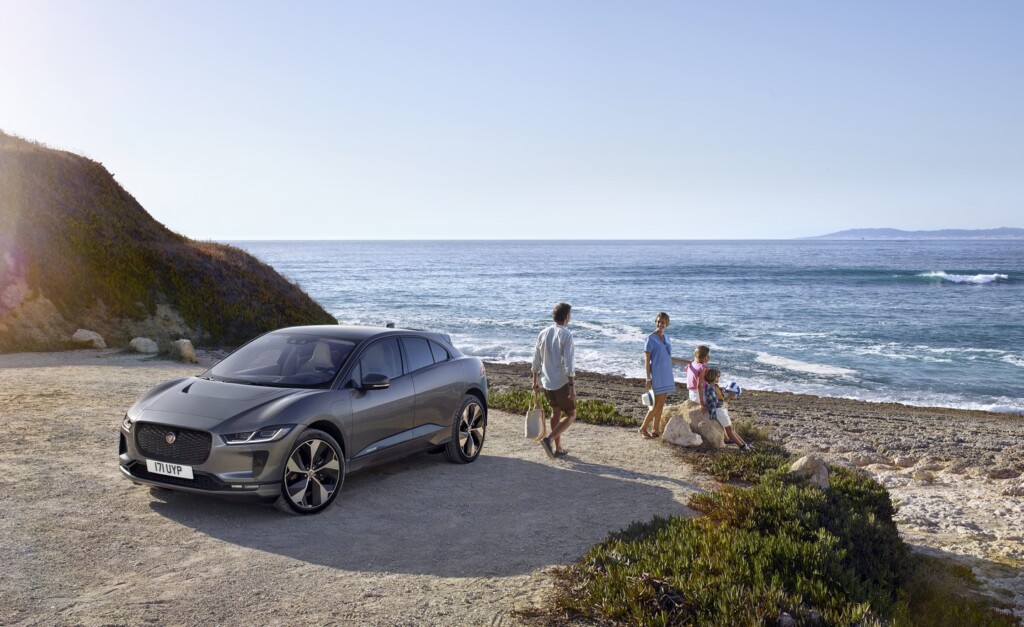
PROVEN IN ALL CONDITIONS
Jaguar has engineered the I-PACE to perform in hot and cold climates, operating at temperatures as low as -40°C: 10°C lower than conventional EVs. The low resistance of the pouch cells, the battery pack’s insulation and an advanced thermal management system work in harmony to ensure the I-PACE delivers in all conditions.
In moderate temperatures, the battery uses a cooler to maximise energy efficiency. A refrigeration unit linked to the vehicle’s main air conditioning system activates only at higher temperatures to control cell temperatures and maximise the available power.
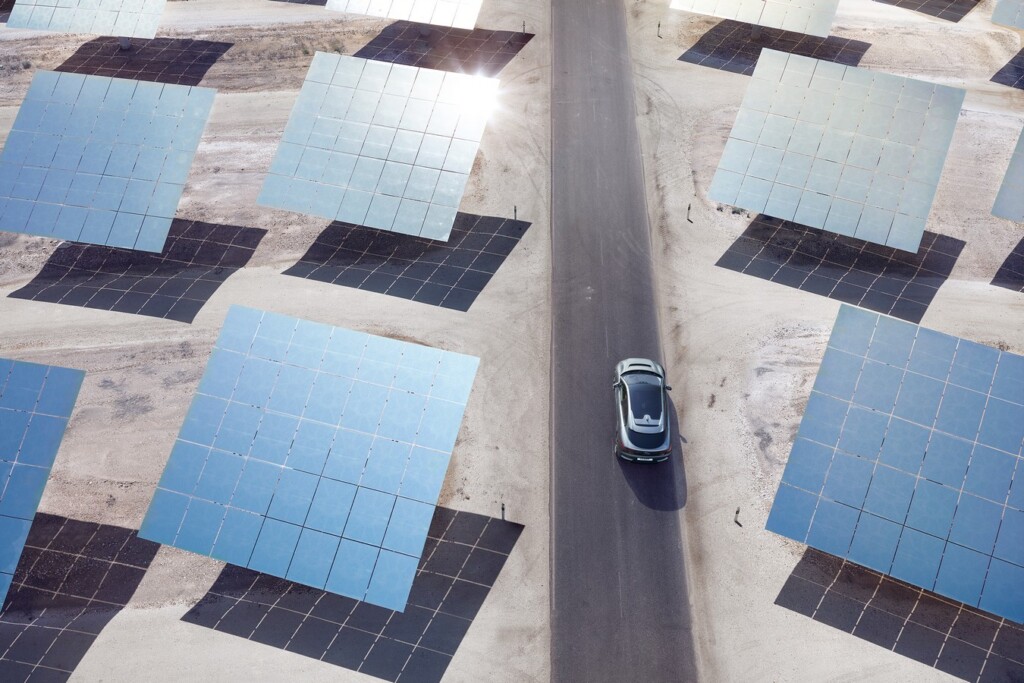
In cold conditions, a heat pump helps to maintain optimum operating conditions for the cells and the interior. This is far more efficient than conventional heaters because it uses energy from outside and heat scavenged from the inverters and power electronics to heat the cabin, rather than relying solely on energy from the battery, and can increase range by almost 50km – even in freezing winter conditions.
By putting the extraordinary I-PACE Concept into production virtually unchanged, the Jaguar I-PACE will transform electric vehicle (EV) design. Its dynamic looks and dramatic lines combine a long wheelbase of 2,990mm with an overall length of 4,682mm, giving the vehicle a similar footprint to the Jaguar F-PACE, with the interior space of a much larger vehicle.
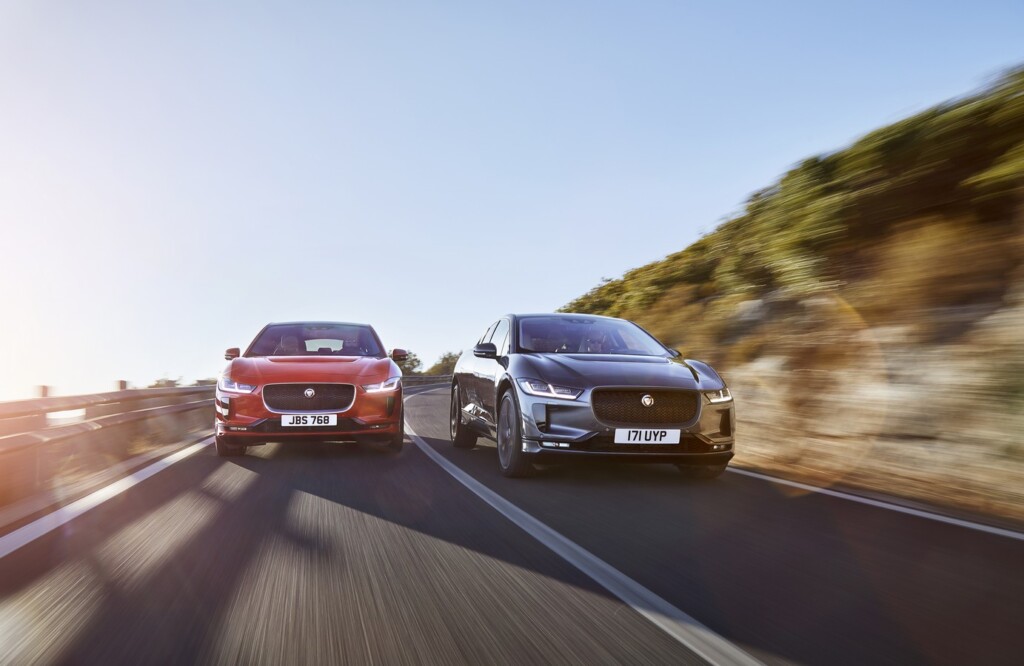
The dramatic lines and bold proportions are a direct result of the advanced electric drivetrain and architecture that underpin the I-PACE. The cab-forward profile is a natural progression of Jaguar’s design language, retaining key characteristics including the grille and distinctive sweep of the daylight opening.
With its exciting proportions and sleek coupé-like silhouette, the I-PACE takes inspiration from the Jaguar C-X75 supercar – including its sweeping front fenders, dramatic curves, muscular haunches and striking waistline, as well as imposing 22-inch wheels.
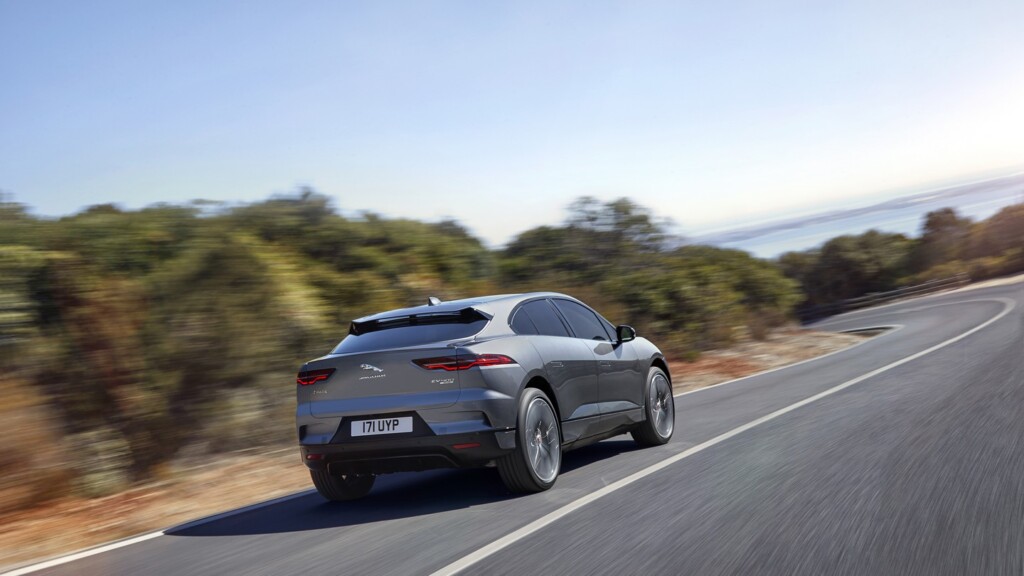
Allied to aerodynamic features including a low bonnet, sweeping roofline and squared-off rear, the I-PACE has a drag coefficient of just 0.29. The grille has evolved into a bold aerodynamic feature, channelling airflow through the integral bonnet scoop and over the windscreen onto a coupé-style roofline to reduce drag. Airflow for battery cooling and the climate control system passes through Active Vanes in apertures in the front bumper, which open when required, and the grille.
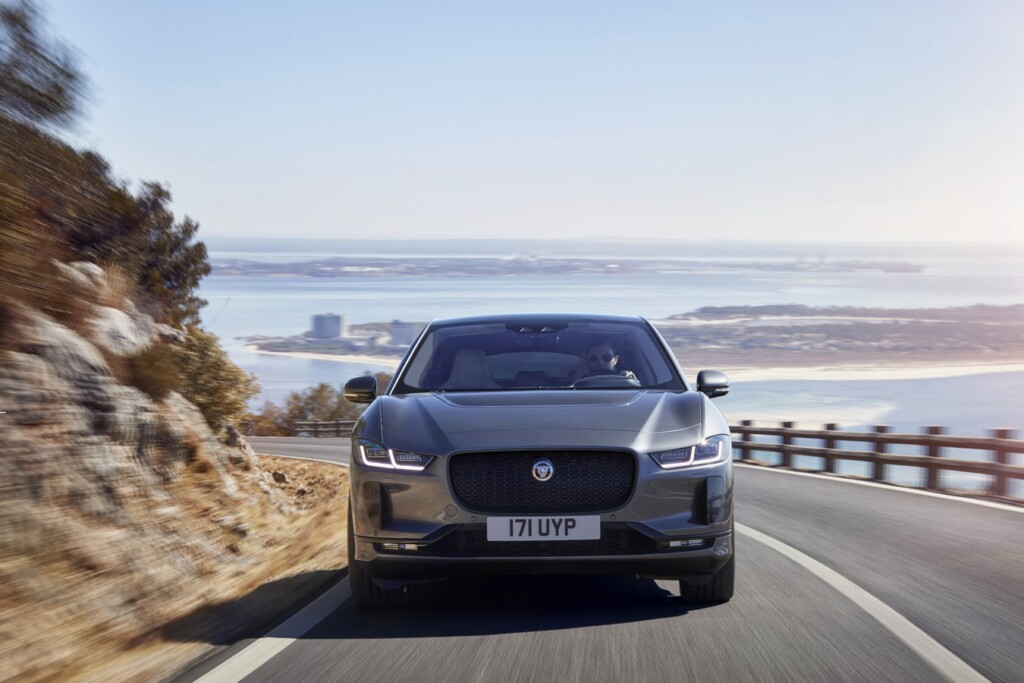
Flush door handles preserve the clean lines and contribute to the superb aerodynamics, emerging from the body at the push of a button on the key fob, or when touched. This attention to detail is heightened on models equipped with optional air suspension, which improves efficiency and optimises range by lowering the vehicle by 10mm at speeds above 65mph (105km/h) to reduce drag.
Jaguar Land Rover’s new Matrix LED lighting technology emphasises the clean lines of I-PACE, resulting in compact headlights that incorporate Jaguar’s trademark double-J graphic with sweeping indicators.

INTERIOR
“We set out to design an emotive and atmospheric interior that excites the senses, where the driver is central to the experience and passengers are afforded the space they need. Being inside the I-PACE is to experience something special and that is what a Jaguar is all about.” – Ian Callum, Director of Design, Jaguar
The attention to detail, state-of-the-art functionality and advanced Touch Pro Duo ‘flight deck’ infotainment combine with the distinctive floating centre console to set an interior design standard for others to follow. Vibrant HD displays, touchscreens and capacitive switches complement multi-function, haptic rotary controllers for an engaging, intuitive experience.
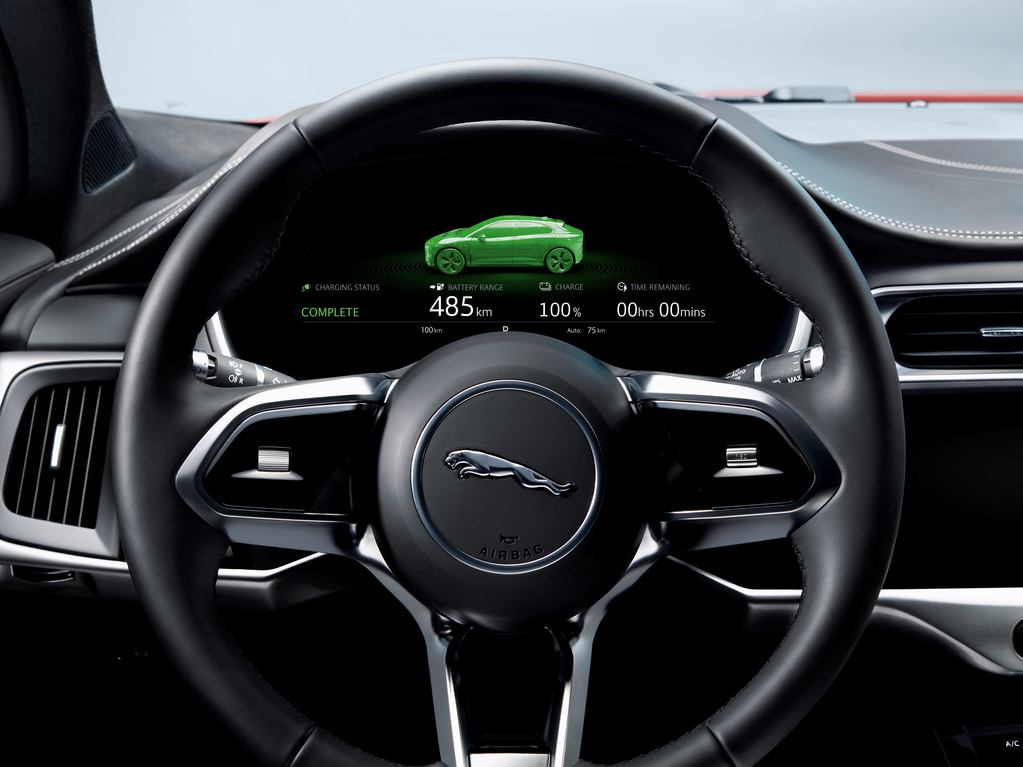
The generous interior offers 890mm of rear legroom and includes ingenious stowage areas. With no transmission tunnel in the centre of the car, there is room for a 10.5-litre compartment in the centre console for phones, keys and other small items. Trays under the rear seats also provide perfect storage for tablets and laptops. The rear luggage compartment capacity of 656 litres is also larger than most medium-sized SUVs, increasing to 1,453 litres with the seats folded flat.
Despite the dramatic sloping roofline there is plenty of rear headroom (968mm) because of the low-slung seating position, which provides a sportier, more enjoyable driving position without compromising posture or space.

The optional, full-size panoramic roof floods the cabin with light and gives the interior an even greater sense of space. Both the glass roof and windows absorb infrared light, keeping the cabin cool and removing the need for blinds.
Customers can choose seats upholstered in either fine-grain Windsor leather or a sustainable, premium textile alternative developed with Danish textile experts Kvadrat – a high quality material that combines a durable wool-blend with recycled technical suede cloth.

Materials are carefully chosen to provide a blend of natural finishes and high-tech surfaces, including deep piano black, satin wood grain and precision-machined aluminium. The contemporary colour palette emphasises the sense of space and lightness inside, while the option of slimline performance seats further enhances the sports car feel of the I-PACE interior.


HyperFocal: 0 

HyperFocal: 0 

HyperFocal: 0 

HyperFocal: 0 

HyperFocal: 0 
HyperFocal: 0 

HyperFocal: 0 
HyperFocal: 0 
HyperFocal: 0 
HyperFocal: 0 
HyperFocal: 0 

HyperFocal: 0 

HyperFocal: 0 















Other posts by Mark Leo


